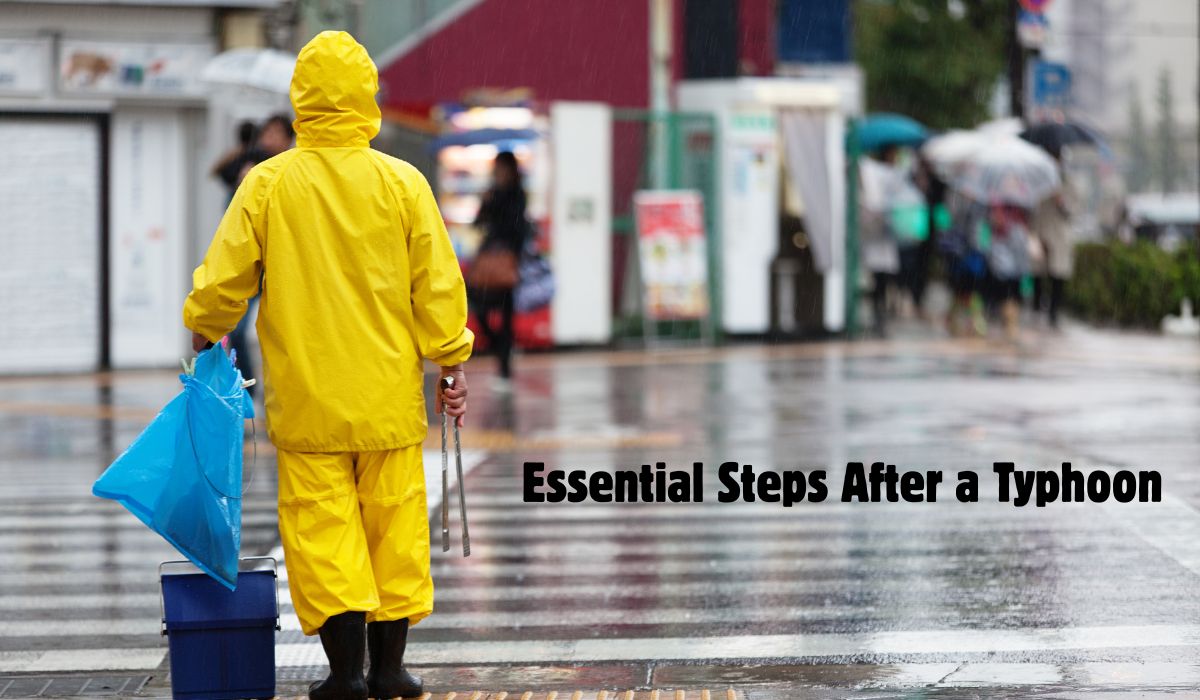Typhoons are powerful reminders of nature’s might, leaving behind trails of destruction and disruption. Once the winds calm and the rain stops, the real challenge begins: recovery. Rising from the storm requires a combination of careful planning, practical action, and community support. Whether you’ve experienced property damage, flooding, or power outages, following essential steps can help you regain stability and rebuild your life safely.
1. Ensure Safety First
Before anything else, prioritize safety. Even after the storm has passed, hazards remain. Floodwaters may contain debris, sewage, or downed power lines, posing serious risks. Avoid walking or driving through flooded areas, and be cautious of slippery surfaces or weakened structures. If your home sustained significant damage, it may be unsafe to enter. Wait for official inspection or clearance before returning.
Check yourself and your family for injuries, and seek medical attention if needed. Keep a first-aid kit handy and ensure you have enough medications for ongoing health needs. Staying safe is the first critical step toward recovery.
2. Assess the Damage
Once it’s safe, assess the damage to your property. Documenting damage is crucial for insurance claims or disaster relief applications. Take photos or videos of structural damage, flooded areas, and destroyed belongings. Make a detailed inventory of lost or damaged items, including receipts if available. This documentation will make the recovery process smoother and help secure financial support.
Prioritize essential repairs first. Focus on restoring safe drinking water, electricity (if available), and shelter. Temporary fixes, like tarps over broken roofs or sandbags against residual flooding, can prevent further damage while you plan longer-term solutions.
3. Address Immediate Needs
After a typhoon, basic needs like food, water, and warmth are paramount. If local stores are closed or supplies are limited, rely on emergency rations, bottled water, and non-perishable foods. Avoid consuming food that may have been contaminated by floodwaters.
For families without power, find safe ways to stay warm and cook food. Portable stoves, solar chargers, and battery-powered devices can be lifesavers. Stay informed about relief efforts, shelter availability, and medical services through local news, radio broadcasts, or community bulletins.
4. Clean Up Safely
Post-typhoon cleanup is a crucial step, but it comes with risks. When tackling debris, be sure to wear protective clothing, gloves, and sturdy footwear to prevent cuts, infections, or insect bites. Carefully sort through damaged items, keeping what can be salvaged and discarding what is beyond repair. Pay close attention to damp areas, as mold can develop quickly and pose serious health hazards if left untreated.
For larger cleanup efforts in Salt Lake City, consider connecting with local disaster cleanup services or volunteer groups. Collaborating with neighbors and community organizations not only speeds up recovery but also reduces physical strain and strengthens community resilience after a major storm.
5. Restore Utilities and Essential Services
Damaged infrastructure often leads to prolonged outages. Once authorities declare it safe, restore utilities step by step. Avoid using damaged electrical equipment or appliances until inspected by professionals. If water supply is contaminated, boil water or use purification tablets before drinking or cooking. Clear blocked drains and gutters to prevent further flooding or water damage.
Communication is also crucial. Recharge phones and maintain contact with friends, family, and local authorities. Sharing information about road conditions, shelter availability, or relief programs strengthens community recovery.
6. Seek Support and Resources
Recovering from a typhoon can be overwhelming, both physically and emotionally. Seek assistance from government disaster relief programs, non-profit organizations, and local aid groups. They can provide food, temporary shelter, financial aid, and psychological support.
Don’t underestimate the emotional toll of such an event. Experiencing stress, anxiety, or grief after a disaster is normal. Talking to counselors, joining support groups, or connecting with neighbors who have gone through the same experience can help you process trauma and regain mental resilience.
7. Plan for the Future
Finally, consider lessons learned and future preparedness. Reinforce structures, install flood barriers, or elevate important utilities to reduce vulnerability to future storms. Stock emergency supplies, review evacuation plans, and stay informed about weather alerts. Preparing now will help mitigate damage and enhance safety when the next typhoon arrives.
In Conclusion
Rising from the storm is not just about rebuilding homes—it’s about restoring lives, health, and hope. By prioritizing safety, documenting damage, addressing immediate needs, and seeking support, you can navigate the aftermath of a typhoon more effectively. Recovery is a gradual process, but with resilience, preparation, and community support, it’s possible to emerge stronger and more prepared for whatever nature brings next.

